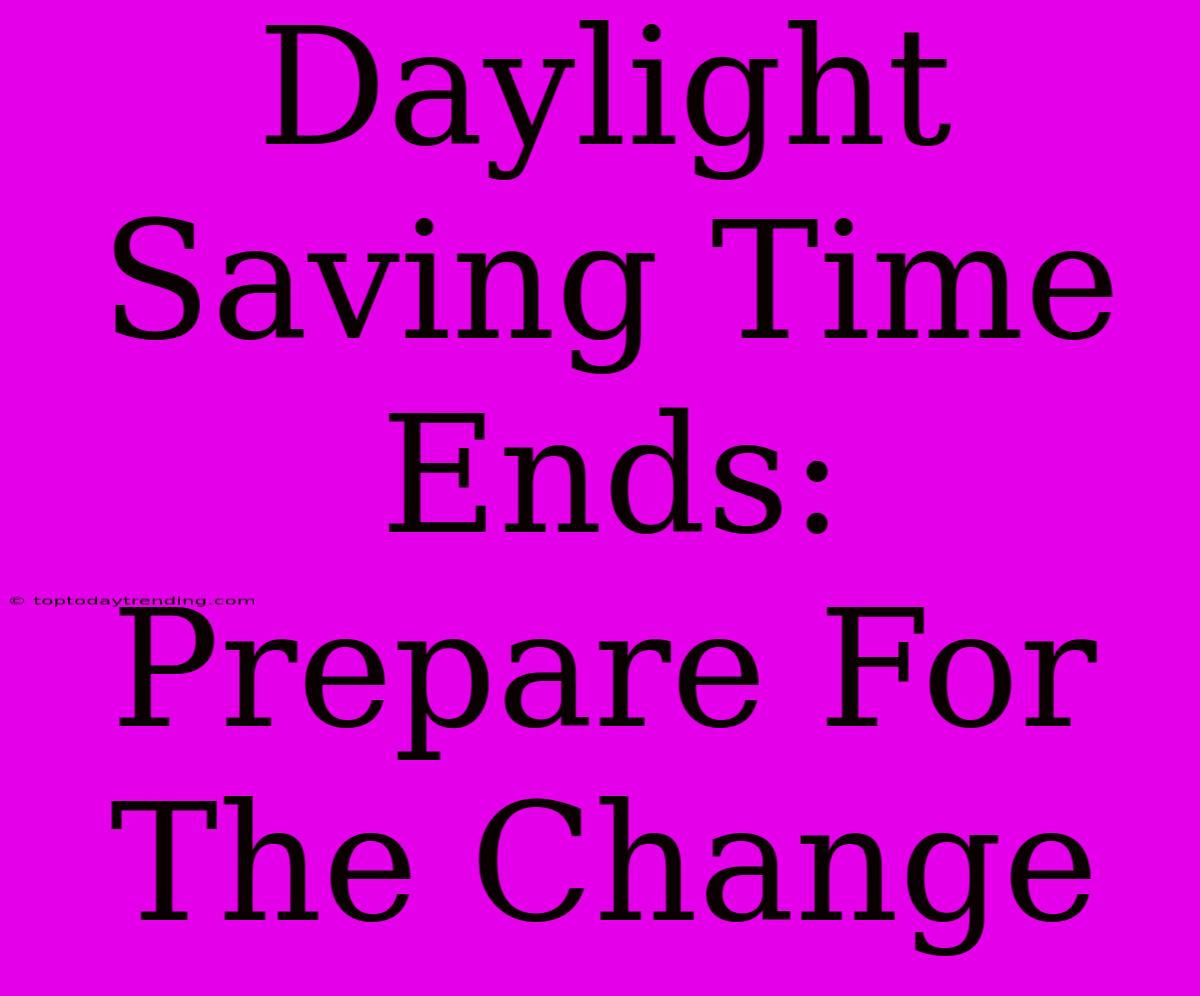Daylight Saving Time Ends: Prepare For The Change
As the days grow shorter and the nights grow longer, it's time to bid farewell to Daylight Saving Time. On the first Sunday of November, we'll be turning our clocks back one hour. This means we'll be waking up to an extra hour of sleep, but it also means adjusting to a new sleep-wake cycle and potentially experiencing some side effects.
Why Do We Have Daylight Saving Time?
Daylight Saving Time (DST) was first implemented during World War I to conserve energy by shifting the clock forward an hour during the summer months. The idea was to take advantage of the longer daylight hours and reduce the need for artificial lighting. While its energy-saving benefits have been debated, DST remains in place in many countries, including the United States.
Impacts of the Time Change
While that extra hour of sleep may sound tempting, the transition back to Standard Time can have some negative impacts. These can include:
• Sleep Disruption: Adjusting to the time change can disrupt our natural sleep-wake cycles, leading to sleepiness, fatigue, and difficulty falling asleep.
• Increased Risk of Accidents: Studies have shown a spike in accidents, especially car accidents, in the days following the transition to Standard Time. This is likely due to increased fatigue and reduced alertness.
• Mood Swings: The disruption to our circadian rhythms can also affect our mood, leading to increased irritability, anxiety, and even depression.
• Health Implications: Long-term disruptions in our sleep cycles can have negative consequences for our physical health, increasing our risk for chronic diseases such as obesity, diabetes, and cardiovascular problems.
Tips for Adjusting to Standard Time
Fortunately, there are steps you can take to minimize the negative effects of the time change. Here's how to prepare:
• Adjust Gradually: In the days leading up to the time change, start going to bed and waking up 15 minutes earlier each day. This will help your body gradually adjust to the new time.
• Avoid Caffeine and Alcohol: Stay away from caffeine and alcohol in the evenings, as they can interfere with your sleep.
• Create a Relaxing Bedtime Routine: Develop a relaxing bedtime routine to help your body signal that it's time for sleep. This could include a warm bath, reading a book, or listening to calming music.
• Get Enough Sunlight: Expose yourself to natural sunlight during the day. This helps regulate your circadian rhythm and improve your sleep.
• Exercise Regularly: Regular exercise can improve your sleep quality, but avoid strenuous activities close to bedtime.
• Be Patient: It takes time for your body to adjust to a new sleep schedule. Be patient with yourself and allow for a few days to fully adapt.
Embrace the Change
While the time change can be disruptive, it's a reminder to appreciate the natural rhythm of the seasons. With a little preparation, you can navigate the shift and enjoy the extra hour of sleep – and the cozy atmosphere of the fall and winter months.

